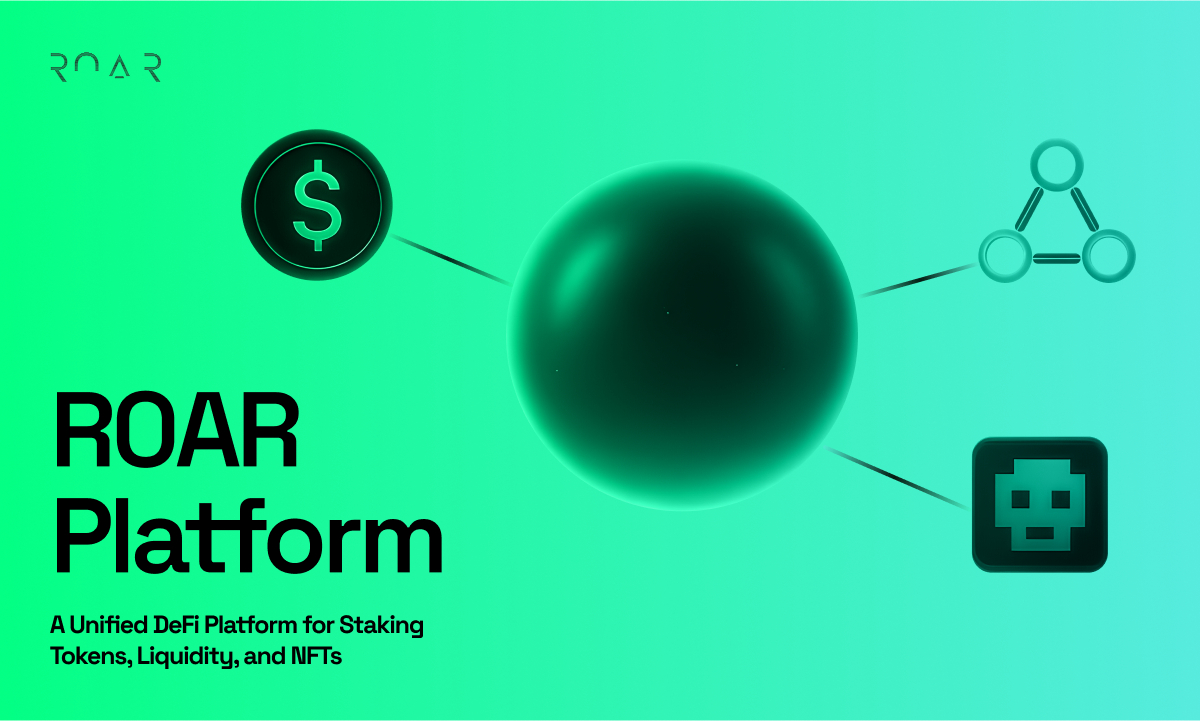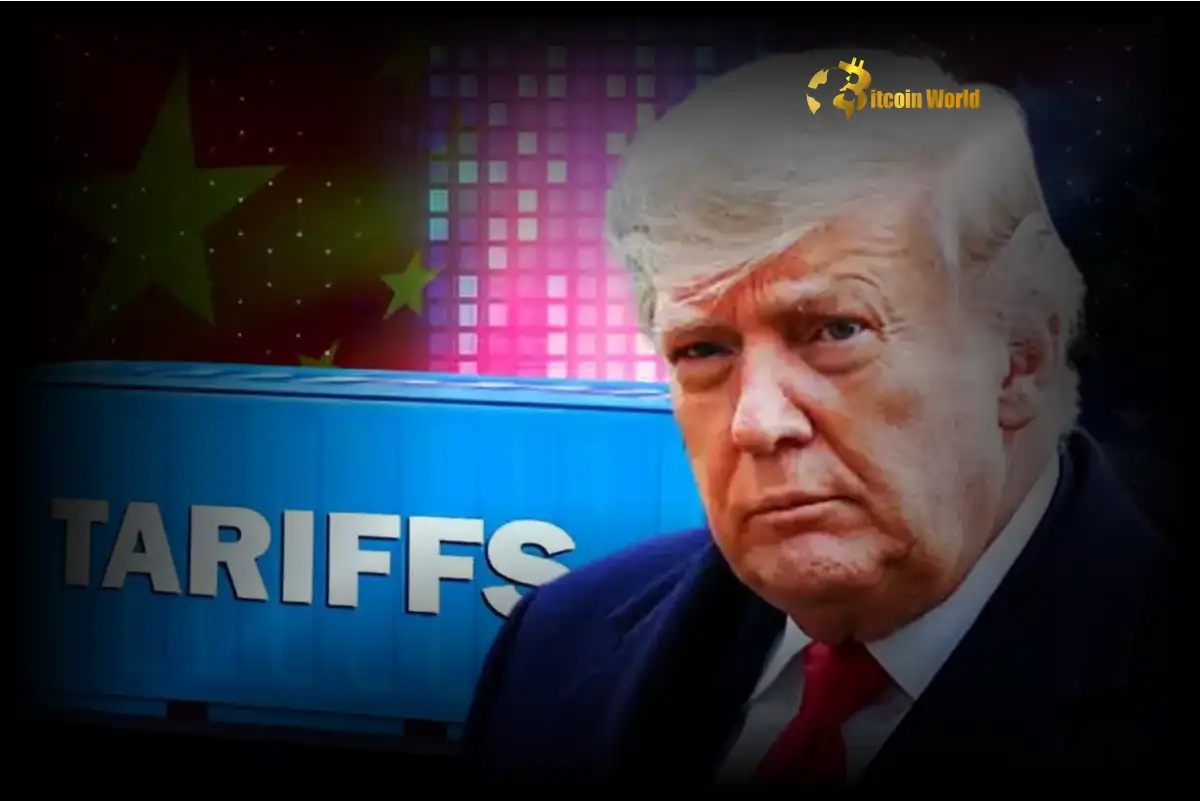BitcoinWorld

South Korea Crypto Lending: A Landmark Move for Industry Clarity
The world of digital assets is constantly evolving, and with its rapid growth comes an increasing need for robust regulatory frameworks. In a significant move that could set a global precedent, South Korean financial authorities are taking decisive action to bring much-needed clarity to the burgeoning crypto lending sector. This isn’t just another regulatory announcement; it’s a landmark initiative designed to foster a safer, more transparent environment for participants in South Korea crypto lending.
Why is South Korea Stepping Up on Crypto Lending Regulation?
The past few years have highlighted both the immense potential and the inherent risks within the decentralized finance (DeFi) landscape, particularly concerning crypto lending services. While these platforms offer attractive yields and flexible financing options, the lack of clear oversight has led to catastrophic collapses, impacting millions of investors globally.
Consider the dramatic downfalls of major crypto lending platforms like Celsius Network, Voyager Digital, and the Terra/Luna ecosystem. These events served as a stark reminder of the vulnerabilities inherent in unregulated markets, from opaque lending practices and insufficient collateralization to liquidity crises and outright fraud. Investors lost billions, and confidence in the broader crypto ecosystem was severely shaken.
South Korea, with its highly active and tech-savvy population, has a significant stake in the digital asset space. The nation’s financial regulators understand that for the crypto market to mature and achieve mainstream adoption, investor protection and market stability are paramount. This proactive stance on South Korea crypto lending regulations aims to prevent similar future catastrophes within its borders and instill greater trust among its citizens and institutions.
Understanding the Task Force: Who’s Involved in Shaping South Korea Crypto Lending?
This isn’t a unilateral decree from the government; it’s a collaborative effort, which is a crucial aspect of its potential success. On July 31, the Financial Services Commission (FSC) and the Financial Supervisory Service (FSS) – South Korea’s primary financial watchdogs – convened a pivotal first meeting in Seoul. But they weren’t alone.
Joining them were representatives from the Digital Asset eXchange Alliance (DAXA) and five of the nation’s leading domestic crypto exchanges. This collaboration signifies a recognition that effective regulation must be informed by industry insights and practical realities. The key players include:
- Financial Services Commission (FSC): The top financial regulator responsible for setting overall policy and direction for the financial markets.
- Financial Supervisory Service (FSS): The executive body that supervises and examines financial institutions, ensuring compliance with regulations.
- Digital Asset eXchange Alliance (DAXA): A self-regulatory body formed by South Korea’s major crypto exchanges (Upbit, Bithumb, Coinone, Korbit, and Gopax). DAXA aims to establish industry best practices and enhance investor protection.
- Five Domestic Crypto Exchanges: The operational front-liners who possess invaluable practical experience and direct interaction with the market and its users. Their input is vital for crafting rules that are both effective and implementable.
This multi-stakeholder approach ensures that the guidelines for South Korea crypto lending are comprehensive, taking into account not just regulatory principles but also the unique characteristics and operational nuances of the digital asset market.
What Will the New South Korea Crypto Lending Rules Address?
The primary objective of this task force is to establish a baseline regulatory framework for crypto lending services. This framework is expected to draw lessons from several critical areas:
- Global Regulatory Trends: Regulators are closely observing how other major jurisdictions like the United States, European Union, and the United Kingdom are approaching crypto regulation, particularly concerning lending and staking services. The aim is to align with international best practices where appropriate, fostering cross-border regulatory coherence.
- Equity Market Practices: Traditional financial markets have decades of experience in regulating lending, securities, and investor protection. The task force will likely adapt proven principles from equity markets, such as robust disclosure requirements, risk assessment methodologies, collateral management standards, and clear dispute resolution mechanisms, to the crypto lending space.
- Unique Characteristics of South Korea’s Digital Asset Market: The task force will also consider the specific dynamics of the South Korean market, including its high retail participation, technological infrastructure, and existing legal frameworks for financial products. This ensures the rules are tailored and effective for the local ecosystem.
Specific areas the new rules for South Korea crypto lending are expected to address include:
| Area of Focus | Potential Regulatory Measures |
|---|---|
| Transparency & Disclosure | Mandatory disclosure of risks, terms of service, interest rates, and platform solvency. |
| Risk Management | Requirements for collateralization ratios, liquidity management, and stress testing of lending protocols. |
| Investor Protection | Clear guidelines on asset segregation, handling of defaults, and mechanisms for investor recourse. |
| Operational Standards | Licensing requirements for lending platforms, cybersecurity protocols, and anti-money laundering (AML) compliance. |
| Prohibited Practices | Potential bans on excessively risky or predatory lending practices. |
Global Context: How Does South Korea Crypto Lending Fit In?
South Korea’s move is part of a broader global trend towards regulating digital assets. Jurisdictions worldwide are grappling with how to integrate crypto into existing financial frameworks without stifling innovation. For instance, the European Union is moving forward with its Markets in Crypto-Assets (MiCA) regulation, which aims to create a comprehensive framework for crypto assets, including stablecoins and other services. The United States continues to debate various approaches, with agencies like the SEC and CFTC asserting jurisdiction over different aspects of the crypto market.
By actively developing its own comprehensive guidelines, South Korea positions itself not just as a follower, but as a potential leader in crafting effective regulatory solutions. The experience and insights gained from developing South Korea crypto lending rules could serve as a valuable case study for other nations looking to navigate similar challenges. This also underscores the growing consensus among major economies that a hands-off approach to crypto is no longer viable, especially for services that mimic traditional financial products.
Challenges and Opportunities for South Korea Crypto Lending
While the intent is clear, the path to effective regulation is fraught with challenges, yet it also presents significant opportunities.
Challenges:
- Balancing Innovation and Regulation: Overly stringent rules could stifle the very innovation that makes crypto so dynamic. The task force must find a delicate balance that protects users without crushing the industry’s growth.
- Defining Complex Assets: The legal classification of various crypto assets (e.g., whether a lending token constitutes a security) remains a complex issue that can impact regulatory jurisdiction and requirements.
- Cross-Border Enforcement: The global and decentralized nature of crypto makes enforcement across national borders inherently difficult. Regulatory arbitrage remains a concern.
- Rapid Technological Evolution: The crypto space evolves at an incredible pace. Regulations must be flexible enough to adapt to new technologies and business models without becoming quickly outdated.
Opportunities:
- Enhanced Investor Confidence: Clear rules build trust, encouraging more retail and institutional investors to participate in the market.
- Attracting Institutional Adoption: Institutions typically require regulatory clarity and reduced risk before committing significant capital to new asset classes. Robust regulations for South Korea crypto lending could unlock substantial institutional investment.
- Fostering a Mature Market: By weeding out bad actors and enforcing best practices, the market can become more stable, predictable, and resilient to shocks.
- Setting a Global Precedent: South Korea’s proactive and collaborative approach could serve as a model for other nations, contributing to a more harmonized global regulatory landscape.
Looking Ahead: The Future of South Korea Crypto Lending
The announcement that these guidelines are expected to roll out next month signifies a rapid and determined effort by South Korean authorities. This initial framework is unlikely to be the final word; regulation is an iterative process. We can anticipate ongoing dialogue, industry feedback, and potential revisions as the market continues to evolve and new challenges emerge.
For crypto businesses operating in South Korea, this means a period of adaptation. Platforms will need to review and potentially revise their operational procedures, compliance frameworks, and disclosure practices to align with the new rules. For individual investors, it promises a safer environment, with greater transparency and reduced exposure to the kinds of risks that have plagued the industry in the past. This forward-thinking approach to South Korea crypto lending is a testament to the nation’s commitment to building a secure and thriving digital economy.
Conclusion: A New Era for Crypto Lending in South Korea
South Korea’s formation of a joint task force with the crypto industry to develop lending rules is a pivotal moment for the nation’s digital asset landscape. By proactively addressing the complexities and risks associated with crypto lending, the FSC, FSS, DAXA, and the participating exchanges are laying the groundwork for a more secure, transparent, and trustworthy market. This landmark initiative is not merely about imposing restrictions; it’s about fostering sustainable growth, protecting investors, and ensuring that South Korea crypto lending can thrive responsibly. As these new guidelines come into effect, they will undoubtedly contribute to a more mature and resilient global crypto ecosystem, paving the way for greater innovation built on a foundation of trust.
Frequently Asked Questions (FAQs)
Q1: What is crypto lending?
A1: Crypto lending involves users lending out their cryptocurrency assets to borrowers, typically through decentralized or centralized platforms, in exchange for interest payments. Borrowers often use these funds for trading, arbitrage, or to gain liquidity without selling their assets, usually by providing collateral.
Q2: Why is South Korea regulating crypto lending now?
A2: South Korea is regulating crypto lending due to the significant growth of the sector and the substantial investor losses experienced globally from unregulated platforms (e.g., Celsius, Terra/Luna). The aim is to enhance investor protection, ensure market stability, and prevent financial crimes within the South Korea crypto lending market.
Q3: Who is involved in the task force developing these rules?
A3: The task force includes key South Korean financial authorities: the Financial Services Commission (FSC) and the Financial Supervisory Service (FSS). They are collaborating with the Digital Asset eXchange Alliance (DAXA) and five major domestic crypto exchanges, ensuring both regulatory and industry perspectives are considered.
Q4: What kind of rules can we expect for South Korea crypto lending?
A4: The new rules are expected to establish a baseline regulatory framework. This will likely include requirements for transparency, risk management, investor protection (e.g., asset segregation, disclosure), operational standards for platforms, and potentially a clear definition of what constitutes a crypto lending product. They will draw from global trends and traditional equity market practices.
Q5: How will these new regulations impact crypto users in South Korea?
A5: For crypto users, these regulations are intended to create a safer and more reliable environment. They can expect greater transparency from lending platforms, better protection of their assets, and clearer recourse mechanisms in case of issues. While some services might become more restrictive, the overall goal is to build trust and foster sustainable growth in South Korea crypto lending.
Q6: When are these new crypto lending rules expected to be rolled out?
A6: The initial guidelines from the task force are expected to be rolled out as early as next month, signaling a swift implementation process by the South Korean financial authorities.
Did you find this article insightful? Share it with your friends and fellow crypto enthusiasts on social media to spread awareness about the evolving regulatory landscape in South Korea and its impact on the digital asset market!
To learn more about the latest crypto market trends, explore our article on key developments shaping crypto regulation and its institutional adoption.
This post South Korea Crypto Lending: A Landmark Move for Industry Clarity first appeared on BitcoinWorld and is written by Editorial Team





